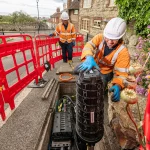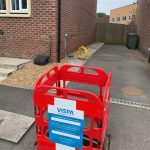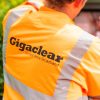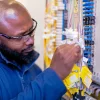Rural Conservation Charities Slam “Rushed” UK Rollout of 4G Mobile Masts

A coalition of community, conservation and outdoor recreation groups has called on the Government to review its “rushed” and “haphazard telecoms mast rollout” under the £1bn Shared Rural Network (SRN) project, which aims to extend geographic 4G (mobile broadband) coverage (aggregate) to 95% of the UK by the end of 2025.
The SRN – supported by £500m of public funding and £532m from operators – is an industry, not government, led scheme that involves both the reciprocal sharing of existing masts in certain areas and the demand-led building and sharing of new masts in others between the operators (MNO). But the 95% target is only when service is available from at least one operator, while the UK coverage forecast for SRN completion for all operators is actually just 84% for the same date (i.e. geographic areas where you’ll be able to take 4G from all providers).
However, not everybody is a fan of the SRN. A new coalition of community, conservation and outdoor recreation groups (mostly based in Scotland) – including Community Land Scotland, the John Muir Trust, Mountaineering Scotland, North-East Mountain Trust, Ramblers Scotland, Knoydart Foundation, the National Trust for Scotland and the Woodland Trust – has called on the government to review the rollout programme.
Advertisement
The group complains that “rushed” applications for new telecom masts are “flooding” into Local Planning Authorities across Scotland and risk “wasting” public money, often with “little justification as to their specific siting and design“. Many of the applications are alleged to “lack meaningful knowledge of the sites they are proposed on, with blatant disregard for whether communities will actually benefit.”
Questions have also been raised over the benefits of the new infrastructure given that “some rural communities say they don’t want these masts” (e.g. Knoydart), whilst in the wild and sparsely populated mountain and upland landscapes, which are expected to host new masts and tracks, there are said to be “no communities to benefit“. On the other hand, the SRN isn’t just about improving mobile coverage for ordinary users – it is also needed to support mobile reception for the emergency services.
Members of the coalition are said to have met with representatives of the SRN programme and the mobile network operators to discuss the concerns in July 2023, but the group claims that “subsequent attempts to re-engage have failed.”
Mike Daniels, Head of Policy at the John Muir Trust, said:
“We want 100% digital connectivity for people and communities in rural Scotland, rather than 95% coverage on a map. That is why we are asking the UK Government, Ofcom and the operators to prioritise proposals where the mast signal would provide coverage and associated connectivity benefits for rural residents’ homes and business premises, and gaps along the road network.”
Davie Black, Mountaineering Scotland, said:
“We absolutely support the principle behind the programme. Local residents and businesses have the right to digital connectivity. But it is communities themselves who are speaking up, saying the siting of the masts will not benefit them. The plan must be paused so we can all sit around the table and get this right. We want to ensure digital connectivity is achieved while protecting Scotland’s last wild landscapes.”
The suggestion that the SRN is being rushed is certainly an interesting one. Mobile infrastructure projects are, in fact, notoriously difficult to deliver and often struggle to achieve their targets – either on time or more generally. Finding suitable sites, obtaining power supply and fibre backhaul – particularly in remote rural areas, as well as securing the necessary permissions through the planning system, are all known bugbears.
Advertisement
Across the United Kingdom we often see related planning applications being rejected, sometimes due to questionable claims (e.g. unsubstantiated health fears) from people who live outside the affected area. This typically forces operators to hunt around for new locations while trying not to compromise network coverage and performance (a tricky task).
Not to mention the recent claims that mobile operators, specifically Three UK, O2 (VMO2) and Vodafone, have reportedly warned the government that the first phase of their SRN project (i.e. the deadline for delivery of industry funded coverage improvements in partial not-spot areas) could be delayed by as much as 2 years (here). This is said to reflect the impact of both the COVID-19 pandemic and long-delays (up to 500 days) in being able to secure planning permission for the sites. Rushed is not the word we’d use to describe the SRN.
A government spokesperson said (BBC):
“Publicly-funded SRN masts in rural areas of Scotland will facilitate 999 calls for the first time, allowing first responders to reach people in need of emergency assistance. At each potential mast location, there is an individual assessment taking account of a wide range of factors including consideration to areas of natural beauty.
All new masts will, of course, then go through the proper planning process.”
The reality here is that mobile masts are fairly large and often noticeable structures, which thus tend to attract opposition, often even in areas where many residents may actually desire a better service. Mobile operators will sometimes go to great lengths to try concealing such masts (e.g. making them look more like trees) or to find alternative locations, but it’s not always enough to placate the complainants and isn’t viable in every setting.
So far, the Government have been more minded to tackle this by softening the existing rules to aid the rollout, rather than hardening them. For example, they recently introduced new legislation to help ease some of the challenges, particularly around infrastructure sharing, upgrades to existing sites and taller masts. Ofcom has only recently begun to consult (here) on adopting some of those changes into the Electronic Communications Code (ECC).
Advertisement
Suffice to say that, given all of the above, and the expectation that the SRN may already be facing some significant delivery delays, it’s hard to see the Government making a dramatic U-turn that might risk causing additional delays to the programme. Like it or not, better coverage and service quality requires more masts in rural areas.
Mark is a professional technology writer, IT consultant and computer engineer from Dorset (England), he also founded ISPreview in 1999 and enjoys analysing the latest telecoms and broadband developments. Find me on X (Twitter), Mastodon, Facebook, BlueSky, Threads.net and Linkedin.
« Labour Party Pledge to Protect £5bn UK Gigabit Broadband Project
Ofcom Begins Review of UK Telecoms Complaints Handlers »






















































Our council knocked backed another one by the seems of it, but I don’t blame them, it would be massive.
That’s the point. A tall mast that can cover a large area.
This was going to be the height of an 8-story building, I know that where it was going to go it would be pretty low anyway. The idea would be to use it to get rid of some masts, but the council don’t like it, they say. “We see no evidence that there has been a thorough attempt to find the least damaging site for the installation,”
I think that is around 4 they have refused in the last 12 months.
25-30 metres is not a ‘massive’ mast. It’s tall but a pretty standard height for covering a large area.
The mobile operator show there are no alternative sites that will achieve the same coverage and prove a need for the coverage in the area they wipe out that rationale for rejection leaving the usual suspects around unacceptably harming the character of the area. There are relatively few cases in urban areas where this is a legitimate objection that stands up to appeal as there’s nearly always something ugly nearby whether telegraph poles, street lamps, other street furniture, etc.
Can’t speak for that council but for a couple here and there they reject everything for whatever reasons they can find, the appeals go in, they lose them, they get the masts anyway and waste local and national taxpayers’ money on the whole affair: everyone loses.
Even local authorities that’ve been pretty willing to allow construction have seen decisions overturned by the inspectorate. Relatively local example to me: https://www.wakefieldexpress.co.uk/news/politics/government-says-essential-5g-mast-should-be-put-up-despite-concerns-3458761
Given the SRN will also support the ESN, presumably communities who don’t want masts are also OK with emergency services not responding to call outs to their addresses due to lack of comms?
Likely, the same people who complain about ugly telegraph poles or streets dug up, unsightly masts are the same people who complain they can’t get fast internet
Yeap, when the nimbys dial 999 good luck to them, they will get all they deserve due to their selfish short sighted arrogance. A shame they’ll also impact others too though.
“A coalition of community, conservation and outdoor recreation groups”
that’s a strange way to describe angry boomers who don’t understand and therefore fear technology.
Please tell us what evidence you have to prove the ages of these complainers and that they don’t understand technology.
SRN and Rushed!
There’s a word for this inappropriate juxtaposition…..
…..possibly MIP, first announced in October 2011!
Pretty much As someone mentioned above,” when in any emergency let them die” , and then we ll see whether a mast is necessary or not.
Some people need the hard way to learn. I ll remind them that their freedom and their rights End where mine begin.
I would replace rushed with ill thought through. Prioritising geographic cover when hugely optimistic coverage maps are overstating residential and business connectivity is yet another digital divide issue.
>overstating residential and business connectivity
Explain this more please.
Also geographic coverage I’d argue is more important because of emergency coverage imo, slow speeds is better than no speed.
If demand is high network operators can figure it out. Or nimbys can kill it and enjoy living a decade or more behind in investment and opportunities from a digital age, stupid because they are most to gain from the internet but anyway. Sympathy with people saying they should get no emergency access, but the more based take is to force the installation of SRN and ignore _completely_ local opposition and councils. Imo ofc.
The government admonished the mobile companies to persue geographic coverage partially to ensure the ESN would be viable, Gerarda.
The dead zones in coverage caused by other buildings, depressions in land, etc, pretty tricky to properly model, could often be fixed by a taller mast in an existing location. We all know how popular those are.
There’s a standard model for indoor coverage as well. Being in a basement or behind many walls in the centre of a larger building isn’t really taken into account in the models.
@mikep
I would have thought geting emergency coverage where there are people is more important than in areas only occasionally visited.
I don’t know why coverage maps are so overstated. The topography should be known to the operators so that is no excuse. Maybe they show theoretical coverage with only user at the base station so in real life the signal disappears at a shorter distance. I
As Gerarda says – “ill thought-out” is a better description. A planning app went in for a mast to provide ESN coverage in our village. Funnily enough, on National Trust land, although most land in the village is in their ownership. The site was open land, highly visible from much of the village. It was accompanied by a desk-based coverage analysis, including potential alternative sites, one of which was adjacent to the existing TV relay – which is as good as invisible until you’re on top of it. It concluded none of the alternative sites were acceptable.
Cue a barrage of objections (see East Devon’s planning reference 20/0415/FUL if you want to look). I’ll confess I sat on the fence back then, for all the reasons others here have articulated.
Suddenly, that much more visually acceptable site by the TV relay wasn’t so bad after all, and the mast went in there following a renewed (acceptable) application, which garnered letters of support from many previous objetors. We now have excellent 4G coverage from EE across the whole village, although if everyone tries to use it for data it’ll fall over – it’s B20 only and wireless backhaul. And in an actual major emergency if the mains fails, it’ll be useless, like so many base stations.
I guess that was the problem with the TV relay site — they weren’t able to get decent backhaul into it.
@Ben – the initial analysis submitted with the planning app only covered mast coverage, not backhaul options. I’d guess because there was no significant difference between the sites. Only fibre in the area would have been that supplying the single BDUK Phase 1 VDSL cabinet. Some is getting slowly fed up there now, from looking at what Openreach have are (slowly) putting on the poles.